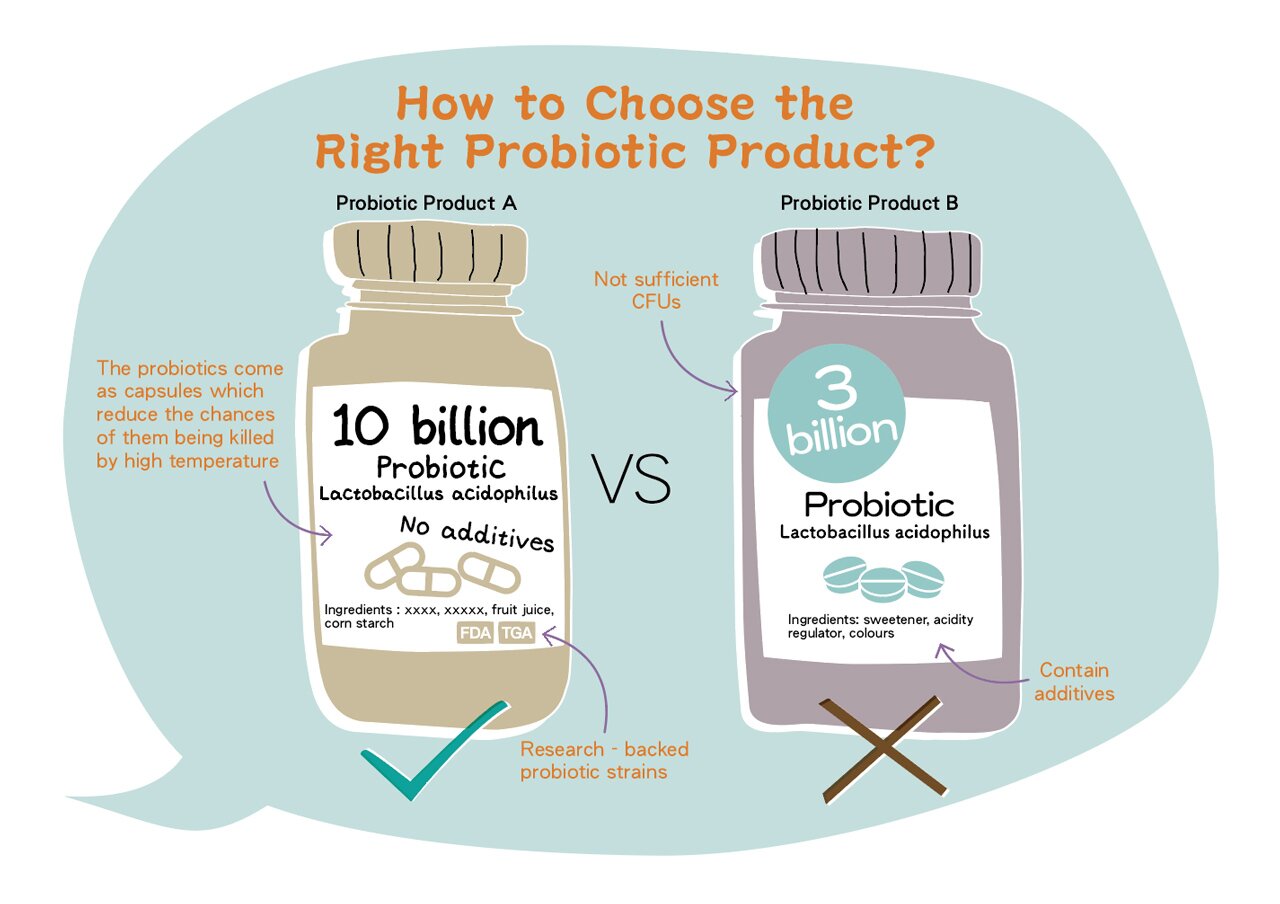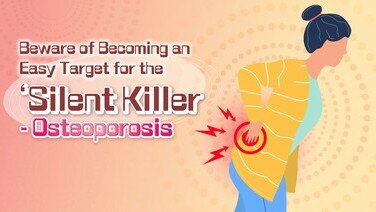If you want to choose the right probiotics to improve your gut health? Then you’d better read on……

1.Over a hundred types of different probiotic products
According to the definition of the World Health Organization (WHO), probiotics are “living microorganisms which when administered in adequate amounts confer a health benefit on the host”. Human intestines contain different types of microorganisms, including bacteria, some of which are harmful. Medical experiments have confirmed that too many harmful bacteria in the intestines over a long period of time could lead to the production of harmful substances. An Imbalanced intestinal environment may also cause problems such as an imbalance immune system and gastrointestinal inflammation. Probiotics can effectively inhibit the growth of harmful bacteria, while some may also provide the body with vitamins and short-chain fatty acids.
At present, there are over a hundred types of different probiotic products on the market, which may have a different effect. The strains of probiotics with the most scientific research support mainly belong to 2 bacterial genera: “Lactobacillus” and “Bifidobaterium”. The former can produce lactic acid while metabolizing sugar, and the latter can produce lactic acid, as well as vitamin B complex and acetic acid. Both can acidify the intestinal environment, inhibit the reproduction of harmful bacteria, and relieve digestive discomfort and constipation (the frequency of normal bowel movements is between 3 times a day and 3 times a week).
2.Trustworthiness is everything
When faced with different products that consist of various “bacteria”, how can consumers distinguish and understand their effects? Therefore, it is best to find out whether the bacterial strains contained in the product(s) have been certified by international agencies such as the US Food and Drug Administration (FDA) or Australia’s Therapeutic Goods Administration (TGA) to prove that the strains have sufficient scientific research support regarding their safety and application.
3.What constitutes an “adequate” amount? Million, billion, or trillion?
How many CFUs in a probiotic product are needed for it to be effective? The answer is more than 10 billion! Since probiotics may not survive in a highly acidic environment, not all probiotics can successfully pass through the stomach to reach the intestines. Besides, probiotics need to compete with the harmful bacteria and conditional pathogens that already exist in the intestinal tract for nutrition, living space, and places on the intestinal wall for adhesion. Therefore, in order to maintain a healthy level of probiotics in the intestinal tract, more than 10 billion CFUs are needed in order for a probiotic product to be effective.
Moreover, the actual population of probiotics in the intestines will only slowly increase after 1 or 2 weeks of taking probiotic products. Symptoms of intestinal discomfort will only then begin to alleviate, such as having a normal daily bowel movement, alleviation of diarrhea symptoms, etc.
4.Capsules are better than lozenges and powders?
You probably never thought that the form of a particular probiotic product will also affect its effectiveness!
Lozenge:It is made by applying heat and compression to the powders to form a round shape pill. Since most probiotics are not resistant to high temperature (> 60°C), a large number of probiotics will die during the lozenge manufacturing process under high heat and pressure;
Powder:They may be packaged into small packets/sachets. Although it is convenient to consume, probiotics (in powder form) may be “digested” by gastric acid and bile and never enter the intestine;
Capsule:It is the more ideal form among the 3. Besides being convenient to carry, the capsule may help to protect the probiotics from the strong acidic environment of the stomach and increase the survival rate of the microorganisms.
5.Are they really effective in so many ways?
Attracted by certain claims such as "treating or easing eczema" and "preventing allergies" on the packaging of probiotic products? According to the guidance document issued by the World Gastroenterology Organization in 2017, there is not enough scientific research to prove which strain of probiotics can help to ease/treat eczema or allergies. Consumers should first understand their conditions and needs from healthcare professionals.
6.Watch out for side effects!
Some people may experience mild side effects after taking probiotics, such as bloating, abdominal cramps, diarrhea, or gastrointestinal discomfort. Some people may develop more serious side effects, such as bacteremia, fungemia or other serious illnesses caused by infections. People with immune problems or serious illnesses may only take certain special bacterial strains. Therefore, consumers should seek medical advice first and take the appropriate probiotics according to your own situation.
7.Less sugar, fewer additives
Probiotics usually contain sour taste, so manufacturers may add sucrose and other flavourings to their products to reduce the sourness. They may even add other additives, such as colors, and regulators. Although these food additives are generally safe, it is always better to choose products that only contain fructose or yogurt powder.
After knowing how to choose the right probiotic products, it is also very important to learn how to consume probiotics. For more information, please refer to the article “When do you need probiotics? Are there any side effects?”, CHOICE Magazine, Issue 520 (Chinese version only).






![[Handwashing Cold Knowledge] Debunking 4 common handwashing myths](/f/guide_detail/409326/376c212/43_4%E5%80%8B%E6%B4%97%E6%89%8B%E5%B8%B8%E8%A6%8B%E8%BF%B7%E6%80%9D_Eng.jpg)





